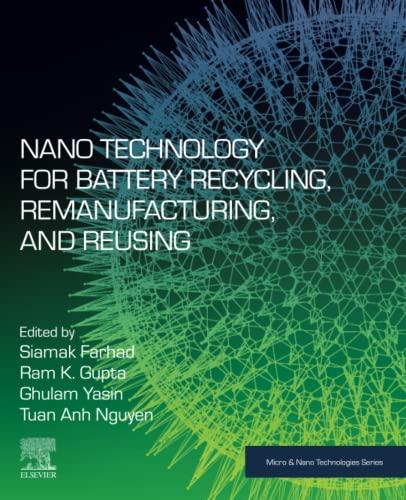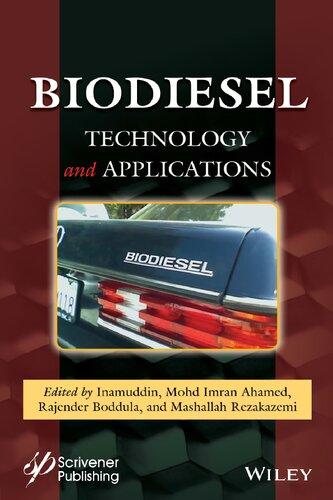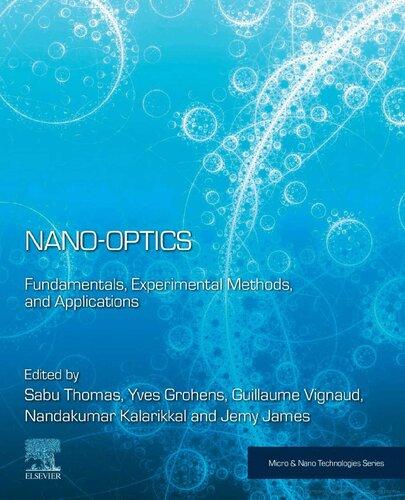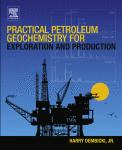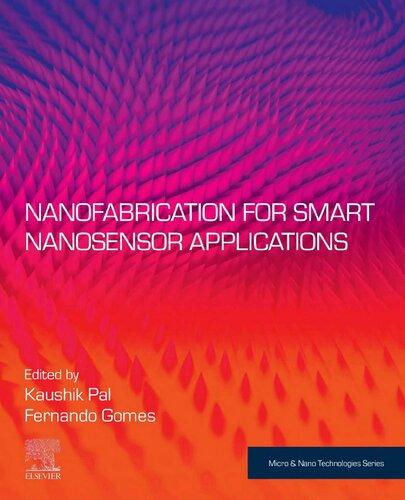Nano-andBiocatalystsforBiodieselProduction
Editedby
AvinashP.Ingle
BiotechnologyCentre
DepartmentofAgriculturalBotany
Dr.PanjabraoDeshmukhKrishiVidyapeeth
Akola,Maharashtra
India
Thiseditionfirstpublished2021 ©2021byJohnWiley&SonsLtd.Allrightsreserved.
Allrightsreserved.Nopartofthispublicationmaybereproduced,storedinaretrievalsystem,or transmitted,inanyformorbyanymeans,electronic,mechanical,photocopying,recordingorotherwise, exceptaspermittedbylaw.Adviceonhowtoobtainpermissiontoreusematerialfromthistitleisavailable athttp://www.wiley.com/go/permissions.
TherightofAvinashP.Ingletobeidentifiedastheauthoroftheeditorialmaterialinthisworkhasbeen assertedinaccordancewithlaw.
RegisteredOffices
JohnWiley&Sons,Inc.,111RiverStreet,Hoboken,NJ07030,USA
JohnWiley&SonsLtd,TheAtrium,SouthernGate,Chichester,WestSussex,PO198SQ,UK
EditorialOffice
TheAtrium,SouthernGate,Chichester,WestSussex,PO198SQ,UK
Fordetailsofourglobaleditorialoffices,customerservices,andmoreinformationaboutWileyproducts visitusatwww.wiley.com.
Wileyalsopublishesitsbooksinavarietyofelectronicformatsandbyprint-on-demand.Somecontentthat appearsinstandardprintversionsofthisbookmaynotbeavailableinotherformats.
LimitofLiability/DisclaimerofWarranty
Inviewofongoingresearch,equipmentmodifications,changesingovernmentalregulations,andthe constantflowofinformationrelatingtotheuseofexperimentalreagents,equipment,anddevices,the readerisurgedtoreviewandevaluatetheinformationprovidedinthepackageinsertorinstructionsfor eachchemical,pieceofequipment,reagent,ordevicefor,amongotherthings,anychangesinthe instructionsorindicationofusageandforaddedwarningsandprecautions.Whilethepublisherand authorshaveusedtheirbesteffortsinpreparingthisbook,theymakenorepresentationsorwarranties withrespecttotheaccuracyorcompletenessofthecontentsofthisworkandspecificallydisclaimall warranties,includingwithoutlimitationanyimpliedwarrantiesofmerchantabilityorfitnessfora particularpurpose.Nowarrantymaybecreatedorextendedbysalesrepresentatives,writtensales materialsorpromotionalstatementsforthiswork.Thisworkissoldwiththeunderstandingthatthe publisherisnotengagedinrenderingprofessionalservices.Theadviceandstrategiescontainedhereinmay notbesuitableforyoursituation.Youshouldconsultwithaprofessionalwhereappropriate.Neitherthe publishernorauthorshallbeliableforanylossofprofitoranyothercommercialdamages,includingbut notlimitedtospecial,incidental,consequential,orotherdamages.Thefactthatanorganization,website, orproductisreferredtointhisworkasacitationand/orpotentialsourceoffurtherinformationdoesnot meanthatthepublisherandauthorsendorsetheinformationorservicestheorganization,website,or productmayprovideorrecommendationsitmaymake.Further,readersshouldbeawarethatwebsites listedinthisworkmayhavechangedordisappearedbetweenwhenthisworkwaswrittenandwhenitis read.Neitherthepublishernorauthorsshallbeliableforanylossofprofitoranyothercommercial damages,includingbutnotlimitedtospecial,incidental,consequential,orotherdamages.
Forgeneralinformationonourotherproductsandservicesorfortechnicalsupport,pleasecontactour CustomerCareDepartmentwithintheUnitedStatesat(800)762-2974,outsidetheUnitedStatesat(317) 572-3993orfax(317)572-4002.
Wileyalsopublishesitsbooksinavarietyofelectronicformats.Somecontentthatappearsinprintmaynot beavailableinelectronicformats.FormoreinformationaboutWileyproducts,visitourwebsiteat ww.wiley.com.
LibraryofCongressCataloging-in-PublicationDataisappliedfor ISBN:978-1-119-73000-2
CoverDesign:Wiley
CoverImage:Gaspumpnozzle©CoronaBorealisStudio/Shutterstock,Oliveoil©Valentyn Volkov/Shutterstock,Buckyball©maggio07/GettyImages,NpmAmethyltransferase©LAGUNA DESIGN/SciencePhotoLibraryRF/GettyImages
Setin9.5/12.5ptSTIXTwoTextbyStraive,Chennai,India
Contents
Preface xv ListofContributors xix
1Biodiesel:DifferentFeedstocks,ConventionalMethods,andFactors AffectingitsProduction 1 HosseinEsmaeiliandSajadTamjidi
1.1Introduction 1
1.2DifferentFeedstocksforBiodieselProduction 3
1.2.1VegetableSources 3
1.2.2WasteOils 3
1.2.3AnimalFats 5
1.2.4MicroalgaOil 6
1.3ConventionalMethodsofBiodieselProduction 8
1.3.1Microemulsion 8
1.3.2PyrolysisorThermalCracking 8
1.3.3Transesterification 8
1.4CatalystsUsedinBiodieselProduction 9
1.4.1HomogeneousCatalysts 9
1.4.1.1HomogeneousAlkalineCatalysts 9
1.4.1.2HomogeneousAcidicCatalysts 9
1.4.2HeterogeneousCatalysts 10
1.4.2.1HeterogeneousAlkalineCatalysts 10
1.4.2.2HeterogeneousAcidCatalysts 10
1.4.3EnzymaticCatalysts 11
1.4.4Nanocatalysts 12
1.5EffectsofDifferentFactorsonBiodieselProductionYield 15
1.5.1ReactionTemperature 15
1.5.2AlcoholtoOilMolarRatio 16
1.5.3ReactionTime 17
1.5.4CatalystDosage 17
1.5.5pH 17
1.5.6MixingRate 17
1.5.7FattyAcids 18
1.5.8WaterContent 18
1.6PhysicalPropertiesofBiodiesel 18
1.7Conclusions 19 References 20
2Nano(Bio)Catalysts:AnEffectiveTooltoUtilizeWasteCookingOilfor theBiodieselProduction 31 RushikeshFopase,SwatiSharmaandLalitM.Pandey
2.1Introduction 31
2.2WasteCookingOils 33
2.3PretreatmentofWCOs 33
2.4TransesterificationProcess 34
2.4.1KineticsofTransesterification 36
2.5EnzymaticBiocatalysts 37
2.5.1Lipases 38
2.5.1.1ExtracellularLipases 38
2.5.1.2IntracellularLipases 39
2.6EnzymeImmobilizationTechniques 41
2.7PhysicalMethods 42
2.7.1Adsorption 42
2.7.2Encapsulation 45
2.7.3Entrapment 46
2.8ChemicalMethods 47
2.8.1CovalentBonding 47
2.8.2Cross-Linking 49
2.8.3Summary 50
2.9Conclusions 50 References 51
3AReviewontheUseofBio/NanostructuredHeterogeneousCatalysts inBiodieselProduction 59 SamuelSantos,JaimePuna,JoãoGomesandJorgeMarchetti
3.1Introduction 59
3.2UseofMicro-andNanostructuredHeterogeneousCatalystsinBiodiesel Production 62
3.2.1MicrostructuredHeterogeneousCatalysts 62
3.2.1.1SolidAcidCatalysts 62
3.2.1.2SolidBaseCatalysts 63
3.2.2NanostructuredHeterogeneousCatalysts 65
3.2.2.1GasCondensation 65
3.2.2.2VacuumDeposition 65
3.2.2.3ChemicalDeposition 66
3.2.2.4Sol-GelMethod 66
3.2.2.5Impregnation 67
3.2.2.6Nanogrinding 68
3.2.2.7Calcination-Hydration-Dehydration 68
3.3EnzymaticCatalysis 69
3.3.1HeterogeneousBiocatalysts(Lipases)andTheirImmobilization 69
3.3.1.1PhysicalAdsorption 70
3.3.1.2Entrapment 70
3.3.1.3CovalentBonding 71
3.3.1.4Cross-Linking 72
3.3.2Nano(Bio)Catalysts:ImmobilizationofEnzymesonNanosupports 73
3.3.2.1Nanoparticles 73
3.3.2.2CarbonNanotubes 75
3.3.2.3Nanofibers 76
3.3.2.4Nanocomposites 76
3.4Conclusions 77
References 78
4Calcium-BasedNanocatalystsinBiodieselProduction 93 PritiR.PanditandArchitMohapatra
4.1Introduction 93
4.2Nanocatalysts 94
4.3CaO-BasedNanocatalystsforBiodieselProduction 95
4.3.1SynthesisandCharacterizationofCaO-BasedNanocatalystsUsingWaste Material 99
4.3.2CaONanocatalystsSupportedwithMetalOxidesforBiodieselProduction 102
4.4EffectsofDifferentParametersonBiodieselProduction 105
4.4.1ReactionTime 105
4.4.2Temperature 105
4.4.3MethanoltoOilMolarRatio 106
4.4.4CatalystLoad 106
4.5ReusabilityandLeachingofNanocatalysts 106
4.6Conclusions 107
References 107
5TitaniumDioxide-BasedNanocatalystsinBiodieselProduction 115 ElijahOlawaleAjala,MaryAdejokeAjalaandHarvisBamideleSaka
5.1Introduction 115
5.2NaturalOccurrencesofTitania 117
5.2.1Rutile 117
5.2.2Anatase 118
5.2.3RhombicBrookite 118
5.2.4KaolinClays 118
5.2.5IlmenitesorManaccanite 120
5.3PrecursorsUsedfortheSynthesisofTiO2 NPs 120
5.3.1TitaniumTetrachloride 121
5.3.2TitaniumTetraisopropoxide 121
5.3.3TitaniumButoxide 122
5.4MethodsfortheSynthesisofTiO2 NPs 122
5.4.1PhysicalMethods 122
5.4.1.1BallMilling 122
5.4.1.2LaserAblation/Photoablation 123
5.4.1.3Sputtering 123
5.4.2ChemicalMethods 123
5.4.2.1Microemulsion 123
5.4.2.2Precipitation 124
5.4.2.3Sol-Gel 124
5.4.2.4Hydrothermal 125
5.4.2.5Solvothermal 125
5.4.2.6Electrochemical/Deposition 125
5.4.2.7Sonochemical 126
5.4.2.8DirectOxidation 126
5.4.3BiologicalMethods 126
5.4.3.1GreenSynthesisUsingPlantExtracts 126
5.4.3.2MicrobialSynthesis 128
5.4.3.3Enzyme-MediatedSynthesis 129
5.5MethodsfortheSynthesisofTiO2 -BasedNanocatalysts 130
5.5.1WetImpregnation 130
5.5.2DryImpregnation 131
5.6TiO2 -BasedNanocatalystsforBiodieselProduction 131
5.6.1SulfatedTiO2 Nanocatalysts 131
5.6.2AlkalineTiO2 Nanocatalysts 133
5.6.3Co-TransitionTiO2 Nanocatalysts 133
5.6.4AlkaliTiO2 Nanocatalysts 134
5.6.5BimetallicTiO2 Nanocatalysts 135
5.6.5.1TiO2 -Pd-Ni 135
5.6.5.2TiO2 -Au-Cu 135
5.7OtherTiO2 NanocompositeCatalysts 135
5.8Conclusions 136 References 136
6Zinc-BasedNanocatalystsinBiodieselProduction 143 AvinashP.Ingle
6.1Introduction 143
6.2FeedstocksUsedforBiodieselProduction 144
6.2.1VegetableOils 144
6.2.2MicrobialOils 145
6.2.3AnimalFats 145
6.2.4WasteOils 145
6.2.5Biomass 146
6.3ConventionalMethodsofBiodieselProduction 146
6.3.1Pyrolysis 146
6.3.2Transesterification 146
6.3.2.1HomogeneousAcidandBase(Alkali)-CatalyzedTransesterification 146
6.3.2.2HeterogeneousAcidandBase(Alkali)-CatalyzedTransesterification 147
6.3.2.3EnzymaticTransesterification 147
6.4NanotechnologyinBiodieselProduction 148
6.5Zinc-BasedNanocatalystsinBiodieselProduction 148
6.6Conclusions 151
References 152
7Carbon-BasedNanocatalystsinBiodieselProduction 157 RahulBhagat,HarrisPanakkal,IndarchandGuptaandAvinashP.Ingle
7.1Introduction 157
7.2FeedstocksUsedforBiodieselProduction 158
7.2.1VegetableOils 158
7.2.2Algae 159
7.2.3AnimalFats 160
7.2.4WasteCookingOils 160
7.3ConventionalHeterogeneousCatalysts 160
7.4Carbon-BasedHeterogeneousNanocatalysts 164
7.4.1CarbonNanotubes 166
7.4.2SulfonatedCarbonNanotubes 167
7.4.3Graphene/GrapheneOxide-BasedNanocatalysts 168
7.4.4CarbonNanofibersandCarbonDots 169
7.4.5CarbonNanohorns 170
7.4.6OtherCarbon-BasedNanocatalysts 171
7.5Conclusions 174 References 174
8FunctionalizedMagneticNanocatalystsinBiodieselProduction 183 KalyaniRajkumariandLalthazualaRokhum
8.1Introduction 183
8.2RelevanceofHeterogeneousCatalysisinBiodieselProduction 185
8.3SurfaceModificationandFunctionalizationofNPs 186
8.4ApplicationsofFunctionalizedMagneticNanocatalystsinBiodiesel Production 186
8.4.1Acid-FunctionalizedMagneticNanocatalysts 186
8.4.2Base-FunctionalizedMagneticNanocatalysts 189
8.4.3MagneticNanocatalystsFunctionalizedwithWasteMaterials 190
8.4.4IonicLiquid-ImmobilizedMagneticNanocatalysts 192
8.5Conclusions 194
References 195
9Bio-BasedCatalystsinBiodieselProduction 201 UmerRashid,Shehu-IbrahimAkinfalabi,NaeemahA.IbrahimandChawalit Ngamcharussrivichai
9.1Introduction 201
9.2Biodiesel:APotentialSourceofRenewableEnergy 204
9.2.1ProgressinBiodieselDevelopment 204
9.2.2DevelopmentofBiodieselinMalaysia 205
9.2.3BiodieselFeedstocks 206
9.2.3.1PFADasaBiodieselFeedstock 207
9.2.4CommonMethodsUsedforBiodieselReaction 208
9.2.4.1Esterification 209
9.2.4.2Transesterification 210
9.3HomogeneousCatalysisinBiodieselProduction 211
9.4HeterogeneousCatalysisinBiodieselProduction 213
9.5CatalystSupports 215
9.5.1Alumina 216
9.5.2Silicate 216
9.5.3ZirconiumOxide 217
9.5.4ActivatedCarbon 217
9.6HeterogeneousBio-BasedAcidCatalysts 217
9.7SynthesisofBio-BasedSolidAcidCatalysts 218
9.7.1PalmTreeFrondsandSpikelets 219
9.7.2 Jatrophacurcas219
9.7.3CoconutShells 220
9.7.4RiceHusks 220
9.7.5Bamboo 221
9.7.6CocoaPodHusks 221
9.7.7Hardwoods 222
9.7.8PeanutHulls 222
9.7.9WoodMixtures 223
9.7.10PalmKernelShells 223
9.8MagneticBio-BasedCatalystsforBiodieselProduction 224
9.9CharacterizationofBio-BasedCatalysts 228
9.9.1FieldEmissionScanningElectronMicroscopy(FESEM) 228
9.9.2FourierTransformInfrared(FT-IR) 229
9.9.3X-RayDiffraction(XRD) 229
9.9.4ThermogravimetricAnalysis(TGA) 230
9.9.5Temperature-ProgrammedDesorption–Ammonia(TPD-NH3 ) 231
9.9.6Brunauer–Emmett–Teller(BET)Analysis 231
9.10ReactionParametersAffectingBiodieselProduction 232
9.10.1ReactionTime 232
9.10.2CatalystConcentration 232
9.10.3MethanoltoFat/OilMolarRatio 232
9.10.4ReactionTemperature 233
9.10.5MixingRate 235
9.11Conclusions 235 References 236
10HeterogeneousNanocatalyticConversionofWastetoBiodiesel 249 NilutpalBhuyan,ManashJ.Borah,NeelamBora,DipankaSaikia,DhanapatiDeka andRupamKataki
10.1Introduction 249
10.2RoleofCatalystsinBiodieselProduction 250
10.3FeedstocksforBiodieselProduction 251
10.3.1First-GenerationFeedstocksorEdibleOils 251
10.3.2Second-GenerationFeedstocksorNon-EdibleOils 252
10.3.3Third-GenerationFeedstocksorAlgae 252
10.3.4OtherFeedstocks 253
10.4BiodieselProductionProcess 253
10.4.1Acid-CatalyzedTransesterification 254
10.4.1.1MechanismofAcid-CatalyzedTransesterification 256
10.4.2Alkali-orBase-CatalyzedTransesterification 256
10.4.2.1MechanismofAlkali-orBase-CatalyzedTransesterification 258
10.4.3OtherTypesofTransesterification 258
10.5VariablesAffectingTransesterification 259
10.6HeterogeneousNanocatalystsforBiodieselProduction 260
10.7CharacterizationofNanoparticlesUsedforBiodieselProduction 262
10.7.1X-RayDiffraction(XRD) 262
10.7.2ScanningElectronMicroscopy(SEM) 262
10.7.3EnergyDispersiveX-RayAnalysis(EDX) 262
10.7.4TransmissionElectronMicroscopy(TEM) 264
10.7.5AtomicForceMicroscopy(AFM) 264
10.7.6RamanSpectroscopy 264
10.7.7FourierTransformInfraredSpectroscopy(FT-IR) 264
10.7.8X-RayPhotoelectronSpectroscopy(XPS) 264
10.7.9ThermogravimetricAnalysis(TGA) 265
10.8InfluenceofNanoparticlePropertiesonBiodieselProduction 265
10.9SafetyIssuesAroundtheApplicationofNanocatalystsinBiodiesel Production 267
10.10FuturePerspectives 267
10.11Conclusions 268 References 269
11ApplicationofRareEarthCation-ExchangedNanozeoliteasa SupportfortheImmobilizationofFungalLipaseandtheirUsein BiodieselProduction 279 GuilhermedePaulaGuarnieri,AdrianodeVasconcellos,FábioRogériodeMoraes andJoséGeraldoNery
11.1Introduction 279
11.2CaseStudy 282
11.2.1OriginsofMaterialsandEnzymes 282
11.2.2PreparationofNa-FAUNanozeolites 282
11.2.3Ion-ExchangeExperiments 283
11.2.4EnzymeImmobilizationontoNanozeoliticSupports 283
11.2.5PhysicochemicalCharacterizationofAs-SynthesizedNanozeolitesand Nanozeolite–EnzymeComplexes 284
11.2.6SynthesisofFAAEs 286
11.2.7FAEEYieldsObtainedwithNanozeoliteComplexes 287
11.2.8ModelofLipaseImmobilizationontoZeoliteSupports 287
11.3Conclusions 290 References 290
12Lipase-ImmobilizedMagneticNanoparticles:Promising NanobiocatalystsforBiodieselProduction 295 ToobaTouqeer,MuhammadWaseemMumtazandHamidMukhtar
12.1Introduction 295
12.2TransesterificationforBiodieselProduction 296
12.2.1HomogenousCatalysts 296
12.2.2HeterogeneousCatalysts 297
12.2.3EnzymaticCatalysts 297
12.3AdvantagesofUsingMagneticNanobiocatalysts 297
12.3.1HighEnzymeLoadingandSurfaceAreatoVolumeRatio 298
12.3.2LowMassTransferRestrictionandHighBrownianMovement 299
12.3.3EffortlessRecoveryandReusability 299
12.3.4Stability 299
12.4SynthesisofNanobiocatalysts 299
12.4.1PreparationandFunctionalizationofNanostructures 299
12.4.2ImmobilizingEnzymesonNanomaterials 300
12.4.2.1AdsorptionImmobilization 300
12.4.2.2CovalentImmobilization 301
12.5TechniquesfortheCharacterizationofNanobiocatalysts 302
12.6TransesterificationUsingMagneticNanobiocatalysts 303
12.7FactorsAffectingEnzymaticTransesterification 304
12.7.1TypeofAlcoholUsed 304
12.7.2Solvent 305
12.7.3ReactionTemperature 306
12.7.4WaterContent 306
12.7.5AlcoholtoOilMolarRatio 306
12.7.6SourceofLipase 306
12.8Conclusions 307 References 307
13TechnoeconomicAnalysisofBiodieselProductionUsingDifferent Feedstocks 313 ShemelisNigatuGebremariam
13.1Introduction 313
13.2BiodieselProductionTechnologies 315
13.3FeedstockTypesforBiodieselProduction 317
13.4TechnicalPerformanceEvaluationofBiodieselProduction 318
13.4.1FuelPropertiesofBiodiesel 319
13.4.1.1FlashPoint 319
13.4.2ColdFlowProperties 319
13.4.2.1CloudPoint 320
13.4.2.2PourPoint 320
13.4.2.3ColdFilterPluggingPoint(CFPP) 321
13.4.3CetaneNumber 321
13.4.4Density 322
13.4.5Viscosity 323
13.4.6OxidationStability 323
13.4.7BiodieselQualityStandards 324
13.5EconomicPerformanceEvaluationoftheBiodieselProductionProcess 324
13.5.1FixedCapitalInvestmentCost 326
13.5.2WorkingCapital(Operating)Cost 329
13.6Conclusions 330 References 331
Index 339
Preface
Theeverincreasingpopulationandglobalindustrializationconsiderablyincreasethe energydemand.Thepetroleum-basedfuels(fossilfuels),coal,naturalgas,nuclear, andhydropowerarethemajorenergysourcescurrentlyavailableforuse.However, theutilizationoftheseenergiesexertsseveralnegativeimpactsontheenvironment includingissueslikeglobalwarming,greenhousegasemission,depletionoffossilfuel reserves,etc.Environmentalpollutionduetoreleaseofvariousparticulatemattersand contaminantsexertshazardouseffectsonhumanhealth.Therefore,itisanurgentneed tosearchrenewableandsustainablealternativeenergysourceshavingnovelfeatures likebiodegradability,ecofriendlynature,lowtoxicity,andeconomicalviability.These featuresareusuallypossessedbybiofuelslikebiodiesel.Sincelastfewdecades,biodiesel hasattractedagreatdealofattentionfromscientificaswellasapoliticalcommunitydue totheirmanyadvantagesoverpetroleumdiesellikeasignificantreductioningreenhouse gasemissions,non-sulfuremissions,non-particulatematterpollutants,possessverylow toxicity,biodegradablenature,andrenewability.
Althoughtechnologiesforindustrialproductionofbiodieselarealreadydeveloped,these conventionaltechnologiesreportedtohavesomedrawbacksbecausethoseareenergyand labor-intensive,expensive,timeconsuming,requiredhighamountofwater,etc.Inthiscontext,scientistsarelookingtowardsnanotechnologyasanewhopebecauseithaspotential torevolutionizedifferentareasofresearchaswellaslife.Recentstudies,alreadyconfirmed thatnanomaterialshavingasizeintherangeof1-100nmplayacrucialroleindifferent processes(i.e.esterificationandtransesterification)usedforbiodieselproduction.Nanomaterialsexhibitnovelandoutstandingpropertiesincludingstrongcatalyticactivitydue toitsminutesize.Todate,variousnanomaterialshavebeeninvestigatedandemployed asnanoandnanobiocatalystsinenhancedbiodieselproductionfromvariousrenewable sourceslikevegetableoils,microbialoils,wastecookingoils,animalfats,wastematerials, etc.Consideringthesefacts,theeditorattemptedtodiscusstherecentadvancesandroleof differentnanocatalysts,biocatalystsandnanobiocatalystsinbiodieselproductionthrough thisbook.
Inthisbook,therearetotal13chapters,whicharebroadlyfocusedontherecent advancesandtheroleofdifferentnanoandbiocatalystsfortheproductionofbiodiesel throughesterificationandtransesterification.Chapter1isanintroductorychapter,it mainlyfocusedonimportantfeedstocksusedfortheproductionofbiodiesel.Inaddition, italsoemphasizedonvariousconventionalmethodscommonlyemployedanddifferent
factorsaffectingtheindustrialproductionofbiodiesel.Chapter2isbasedonroleof differentnano(bio)catalystsintheproductionofbiodieselusingwastecookingoil.Italso highlightedontheissuesofwastecookingoildisposalanditsmanagementthroughtheir useasimportantfeedstockforbiodieselproduction.Authorsalsodescribedtheprocesses forthedevelopmentofnano(bio)catalystsviadifferentenzymeimmobilizationtechniques. InChapter3authorsreviewedtheroleofdifferentbio/nanostructuredheterogeneous catalystsinbiodieselproduction.Chapter4specificallyfocusedontheroleofcalciumoxide nanocatalystsintheproductionofbiodieselbecauseitisrevealedthatamongdifferent nanocatalysts,metaloxide-basednanocatalystsshowedbettercatalyticperformancesas farastransesterificationapproachisconcerned.Inthesimilarline,Chapter5discusses theroleoftitaniumdi-oxidenanocatalystsinbiodieselproduction.Inaddition,authors alsodescribedthedifferentprecursorscommonlyemployedinsynthesisoftitanium di-oxidenanoparticlesanddifferentsynthesismethods.Chapter6dealswithrecent advancesinthesynthesisofzinc-basednanocatalystsandtheireffectiveapplications inbiodieselproduction.Moreover,thischapterbrieflyhighlightedaboutthedifferent commonfeedstocksusedfortheproductionofbiodieselandconventionalapproaches routinelyinpracticeforindustrialproductionofbiodiesel.Chapter7examinesthe applicationsofanotherimportantkindofnanocatalystsi.e.carbon-basedheterogeneous nanocatalystsfortheproductionofbiodiesel.Chapter8emphasizesononeofthemost importantcategoryofnanocatalysts(functionalizedmagneticnanocatalysts)inbiodiesel production.Inrecentpast,scientificcommunityworkinginthisfieldsfocusingonthe useofmagneticnanocatalystsforrapidandeconomicallyviableproductionofbiodiesel. Themainadvantageofusingfunctionalizedmagneticnanocatalystsistheycanbeeasily recoveredduetotheirstrongmagneticnatureandreuseformultipletimesmakingthe down-streamprocessingeasyandcost-effective.Chapter9isabouttheapplicationof bio-basednanocatalystsforbiodieselproduction.Chapter10isdedicatedtotheuseof variousheterogeneousnanocatalystsintheconversionofwastetobiodiesel.Itdiscussed abouttheeffectivenessofheterogeneousnanocatalystsoverotherconventionalcatalysts. Chapter11focusedonapplicationofrare-earthcationexchangednanozeoliteasasupport fortheimmobilizationoffungallipaseandtheiruseinbiodieselproduction.Nanozeolites areconsideredtobeoneofthemostsuitablesupportfortheimmobilizationofenzymes commonlyemployedinbiodieselproductionbecausethesekindofsupportsprovides highstabilitytoenzymesandprotectsitfrominactivations.Chapter12emphasizeson applicationoflipaseimmobilizedmagneticnanoparticlesaspromisingnanobiocatalysts inbiodieselproduction.Thischaptersbrieflydiscussedaboutvarioustechniquesusedfor enzymeimmobilizationoflipaseonmagneticnanoparticlesandtheiradvantagesover othercatalystsasfarasbiodieselproductioninconcerned.Finalchapter13isfocused onthemostimportantandrelevantaspectsi.e.techno-economicalanalysisofbiodiesel productionusingdifferentfeedstocks.Thetechno-economicalanalysisofanyproductsis ofutmostimportantfromindustrialpointofview.Thisistheonlyanalysiswhichhelpto runtheindustrysmoothly.
Overall,thisbookcoversveryinformativechapterswrittenbyoneormorespecialists, expertsintheconcernedtopic.Inthisway,Iwouldliketoofferaveryrichguidefor researchersinthisfield,undergraduateorgraduatestudentsofvariousdisciplineslike biotechnology,nanotechnology,biofuelsectors,biorefiningfields,etc.andalliedsubjects.
Inaddition,thisbookisusefulforpeopleworkinginvariousbiorefiningindustries, regulatorybodies,andenergyrelatedorganizations.
Iwouldliketothankallthecontributorsfortheiroutstandingeffortstoprovide state-of-the-artinformationonthesubjectmatteroftheirrespectivechapters.Their effortswillcertainlyenhanceandupdatetheknowledgeofthereadersabouttheroleof nanotechnologyingeneralandnano(bio)catalystsinparticularforbiodieselproduction.I alsothankeveryoneintheWileyteamfortheirconstanthelpandconstructivesuggestions particularlytoHigginbothamSarah(SeniorEditor),Stefanie,Nivetha,andotherteam members.IamalsothankfultoScienceandEngineeringResearchBoard(SERB),DepartmentofScienceandTechnology,GovernmentofIndia,NewDelhiforprovidingfinancial assistanceintheformof“RamanujanFellowship”.
Ihopethatthebookwillbeusefulforallthereaderstofindtherequiredinformationon thelatestresearchandadvancesinthefieldofbiorefineryandbiofuelindustries.
AvinashP.Ingle
ListofContributors
MaryAdejokeAjala DepartmentofChemicalEngineering UniversityofIlorin Ilorin,KwaraState Nigeria
ElijahOlawaleAjala DepartmentofChemicalEngineering UniversityofIlorin Ilorin,KwaraState Nigeria
Shehu-IbrahimAkinfalabi InstituteofAdvancedTechnology UniversityPutraMalaysia Serdang
Malaysia
RahulBhagat DepartmentofBiotechnology GovernmentInstituteofScience Aurangabad,Maharashtra
India
NilutpalBhuyan DepartmentofEnergy TezpurUniversity Assam
India
NeelamBora DepartmentofEnergy TezpurUniversity Assam
India
ManashJ.Borah DepartmentofEnergy TezpurUniversity Assam
India
DhanapatiDeka DepartmentofEnergy TezpurUniversity Assam
India
FábioRogériodeMoraes PhysicsDepartment
SãoPauloStateUniversity–UNESP
SãoPaulo
Brazil
AdrianodeVasconcellos PhysicsDepartment
SãoPauloStateUniversity–UNESP
SãoPaulo
Brazil
xx ListofContributors
HosseinEsmaeili DepartmentofChemicalEngineering BushehrBranch IslamicAzadUniversity Bushehr
Iran
RushikeshFopase Bio-Interface&Environmental EngineeringLab,Departmentof BiosciencesandBioengineering IndianInstituteofTechnologyGuwahati Guwahati
India
ShemelisNigatuGebremariam HawassaUniversity WondoGenetCollegeofForestryand NaturalResources
Shashemene
Ethiopia
JoãoGomes
CERENA–CenterforNaturalResources andInstitutoSuperiorTécnico LisbonUniversity Lisbon Portugal ChemicalEngineeringDepartment InstitutoSuperiordeEngenhariadeLisboa LisbonPolytechnic,Lisbon
Portugal
GuilhermedePaulaGuarnieri PhysicsDepartment SãoPauloStateUniversity–UNESP SãoPaulo
Brazil
IndarchandGupta DepartmentofBiotechnology GovernmentInstituteofScience Aurangabad,Maharashtra
India
NaeemahA.Ibrahim InstituteofAdvancedTechnology UniversityPutraMalaysia Serdang
Malaysia
AvinashP.Ingle BiotechnologyCentre DepartmentofAgriculturalBotany Dr.PanjabraoDeshmukhKrishi Vidyapeeth Akola
Maharashtra
India
RupamKataki DepartmentofEnergy TezpurUniversity Assam
India
JorgeMarchetti FacultyofSciencesandTechnology NorwegianUniversityofLifeSciences Ås,Norway
ArchitMohapatra GujaratBiotechnologyResearchCentre Gandhinagar,Gujarat
India
HamidMukhtar InstituteofIndustrialBiotechnology GovernmentCollegeUniversity Lahore
Pakistan
MuhammadWaseemMumtaz DepartmentofChemistry UniversityofGujrat
Gujrat
Pakistan
JoséGeraldoNery PhysicsDepartment
SãoPauloStateUniversity–UNESP SãoPaulo
Brazil
ChawalitNgamcharussrivichai CenterofExcellenceinCatalysisfor BioenergyandRenewableChemicals (CBRC),FacultyofScience ChulalongkornUniversity Pathumwan
Thailand
CenterofExcellenceonPetrochemicaland MaterialsTechnology(PETROMAT) ChulalongkornUniversity Pathumwan
Thailand
HarrisPanakkal DepartmentofBiotechnology GovernmentInstituteofScience Aurangabad,Maharashtra
India
LalitM.Pandey Bio-Interface&Environmental EngineeringLab,Departmentof BiosciencesandBioengineering IndianInstituteofTechnologyGuwahati Guwahati
India
PritiR.Pandit GujaratBiotechnologyResearchCentre Gandhinagar,Gujarat
India
ListofContributors
JaimePuna CERENA–CenterforNaturalResources andInstitutoSuperiorTécnico LisbonUniversity
Lisbon
Portugal ChemicalEngineeringDepartment InstitutoSuperiordeEngenhariadeLisboa LisbonPolytechnic,Lisbon
Portugal
KalyaniRajkumari DepartmentofChemistry
NationalInstituteofTechnologySilchar India
DepartmentofChemistry C.V.RamanGlobalUniversity Bhubaneswar
India
UmerRashid InstituteofAdvancedTechnology UniversityPutraMalaysia Serdang
Malaysia
LalthazualaRokhum DepartmentofChemistry NationalInstituteofTechnologySilchar India
DepartmentofChemistry UniversityofCambridge Cambridge,UK
DipankaSaikia DepartmentofEnergy TezpurUniversity
Assam
India
xxii ListofContributors
HarvisBamideleSaka DepartmentofChemicalEngineering UniversityofIlorin Ilorin,KwaraState
Nigeria
SamuelSantos CERENA–CenterforNaturalResources and InstitutoSuperiorTécnico,Lisbon University Lisbon Portugal
SwatiSharma Bio-Interface&Environmental EngineeringLab,Departmentof BiosciencesandBioengineering IndianInstituteofTechnologyGuwahati Guwahati
India
SajadTamjidi DepartmentofChemicalEngineering BushehrBranch IslamicAzadUniversity Bushehr
Iran
ToobaTouqeer DepartmentofChemistry UniversityofGujrat
Gujrat
Pakistan
Biodiesel:DifferentFeedstocks,ConventionalMethods,and FactorsAffectingitsProduction
HosseinEsmaeili 1 andSajadTamjidi 2
1 DepartmentofChemicalEngineering,BushehrBranch,IslamicAzadUniversity,Bushehr,Iran
1 DepartmentofChemicalEngineering,ShirazBranch,IslamicAzadUniversity,Shiraz,Iran
1.1Introduction
Fossilfuelsareanon-renewablesourceofenergywhosereservesarelimited,andtheytake millionsofyearstodevelop(Bankovi ´ c–Ili ´ cetal.2014).Thewidespreaduseofpetroleum derivativesinrecentdecadeshasledtoenergycrisis,globalclimatechange,environmental pollution,andmanymedicalproblems,suchascardiovasculardiseasesandcancers(Dhiraj andMangesh2012).Collectively,alltheseconcerns,alongwithotherslikeglobalwarming andgreenhousegasemissions,havespurredthesearchforalternativefuels(e.g.,biohydrogen,biodiesel,bioethanol,biomethanol,biogas,naturalgas,andbioelectricity)thathave relativelylessadverseimpactsonandgreatercompatibilitywiththeenvironment(Demirbas2004;Nascimentoetal.2011;Fahdetal.2014).Accordingtoareportpresentedbythe InternationalEnergyAgency(IEA),by2035,worldenergyconsumptionwillincreaseby 33%(InternationalEnergyAgency2013),anditisanticipatedthat40%ofthegrowthwill comefromrenewablesources.Amongtherenewableenergies,biodieselhasrecentlyexperiencedsignificantdevelopmentsthankstoitsoutstandingadvantages,includinghigher cetanenumber(CN),nontoxicity,andhigherflashpointcomparedwithfossilfuels(Liu etal.2010;Hasheminejadetal.2011).Biodieselisabiofuelwithpropertiescloselymimickingthoseofdiesel,butwithoutunfavorablecontentssuchasnitrogen,sulfur,andpolycyclicaromatics.Thisrenewablebiofuelisamono-alkylestersoflong-chainfattyacidsthat isproducedfromvegetableoil,wasteedibleoil(WEO),wastecookingoil(WCO),waste non-edibleoil,animalfats,andmicroorganismssuchasalgae,fungi,andbacteria(Kralova andSjoblom2010;NabiandHoque2008).
Therearefourprimarymethodsofbiodieselproduction:blending,microemulsion, thermalcracking(pyrolysis),andtransesterification.Amongthese,thetransesterification reactionisthemostcommonlyusedfortheconversionofoilsintobiodiesel,becausethe fuelproducedbythismethodhasbeenfoundtobehighlycompatiblewithconventional dieselengines.Directuseofthevegetableoil-derivedbiodieseldamagessuchenginesdue tothehighviscosityoftheoil(Ramlietal.2017).Themostcommonshort-chainalcohols usedforthispurposeincludemethanolandethanol;thankstoitslowerprice,methanol Nano-andBiocatalystsforBiodieselProduction, FirstEdition.EditedbyAvinashP.Ingle. ©2021JohnWiley&SonsLtd.Published2021byJohnWiley&SonsLtd.
2
1Biodiesel:DifferentFeedstocks,ConventionalMethods,andFactorsAffectingitsProduction istheeconomicalcoholofchoice(Ramadhasetal.2005).Also,removalandrecoveryof methanolfromthefinalproduct(biodiesel)iseasierthanforotheralcohols(Allahand Alexandru2016).
Therearethreekindsofcatalystscommonlyusedforthisprocess:alkaline,acidic, andenzymatic.Acidicandalkalinecatalystscomeinbothhomogeneousandheterogeneoustypes.Homogeneousalkalinecatalysts(HACs)likeNaOHandKOHhavesome disadvantages,includingcorrosionproblems,nonrecyclability,andtheproductionofa largeamountofwaste,whileheterogeneouscatalystshaveseveraladvantages,including appropriaterecyclability,norequirementforawashingstep,andhigherefficiencyin biodieselproductioncomparedtohomogeneousones.However,enzymaticcatalystsalso haveseverallimitations,includingalowreactionrate,highcostoftheenzymes,and deactivationofthecatalyst,especiallywhenusedinindustry(Linetal.2011;Talhaand Sulaiman2016).Giventheselimitations,theuseofnanocatalystsforbiodieselproduction hasbeenextensivelyincreasedinrecentyears.Nanocatalystshaveseveraloutstanding advantages,includingreusability,highcatalyticactivity,highsurfacearea,andhigh efficiency(Ambatetal.2019;Seffatietal.2020).Apartfromthecatalyst,thereareseveral otherfactorsthataffecttheefficiencyofbiodieselproduction.Thesemainlyinclude reactiontime,reactiontemperature,alcoholtooilmolarratio,typeandconcentrationof catalyst,stirringrate,andfeedstock(oil)used(VermaandSharma2016).
Biodieselisalong-chainfatty-acidmethylester(FAME)derivedbythereactionbetween alcohol,oil,andanappropriatecatalyst(Pasupuletyetal.2013).Intheconventionalprocess,theoilreactswiththealcohol(methanol,ethanol,propanol,orbutanol)inthepresenceofacatalyst(alkaline,acidic,orenzymaticcatalyst)toproduceaFAME(biodiesel)as themainproductandglycerinasabyproduct(Sundusetal.2017).AccordingtotheUnited StatesEnvironmentalProtectionAgency(USEPA),theuseofbiodieselinavehicle’sengine decreasestheemissionofhydrocarbon(HC)(about70%)andofcarbonmonoxideandparticulatematter(50%)comparedtodieselfuel,butincreasesthatofNOx (about10%)(Geller andGoodrum2004).Phosphorusisanotherhazardousgaspresentindieselthatcanharm thecatalyticpartofthecontrolsysteminthevehicleengine.Therefore,theconcentration ofphosphorusintheoilmustbecontrolledinordertoprotectthesystem.Also,thepresenceofsulfurcandamagethecatalyticconverterandemissioncontrolsystem.Atpresent, thesulfurcontentincommercialbiodieselisnearlyzero,whichisoneofitsmainadvantagescomparedtopetro-diesel(Chenetal.2018).Moreover,thepresenceofwaterintheoil causeshydrolysisoftriglyceridetofreefattyacid(FFA)andthereforeleadstosoapformation.Ifwaterconcentrationintheoilismorethan0.05wt%,watermustberemoved(Chen etal.2018).Depositionofmetalssuchascalcium,magnesium,sodium,andpotassiumcan furthercausealotofproblemsinvehicleengines(Balasubramaniyan2016).
Theaimofthischapteristodiscussthevariousfeedstocks(i.e.oilsources)available(e.g. vegetableoil,microalgaoil,animalfat,andwasteoil)andtheirconversioninbiodieselusing differentconventionalheterogeneouscatalysts.Inaddition,recentadvancesandtheapplicationandimpactofheterogeneousnanocatalystsonbiodieselproductionarebrieflydiscussed,andtheimpactofvariousreactionparameterssuchastemperature,reactiontime, catalystcontent,andalcoholtooilratioonthetransesterificationreactionisdescribed. Specialfocusisgiventothephysicalpropertiesofbiodiesel,includingpourpoint,flash point,kinematicviscosity,CN,density,acidnumber,cloudpoint,andK + Na + Mg + Ca concentration,andtheircomparisonwithinternationalstandards.
1.2DifferentFeedstocksforBiodieselProduction
Morethan70%ofthecostofbiodieselproductionisrelatedtotherawmaterials.Biodiesel andpetro-dieselcostabout3.03and2.46US$/gal,respectively(Chenetal.2018).Inthe literature,anumberofdifferentfeedstocksarecommonlyusedforbiodieselproduction, includingvegetableoils,WEOs,animalfats,andmicroalgaoil(Channietal.2016).
1.2.1VegetableSources
Thevegetableoilsusedtoproducebiodieselcanbeeitheredibleornon-edible.More than95%ofthebiodieselproducedintheworldisproducedfromedibleoil,whichis easilyobtainedfromtheagriculturalindustries.However,large-scaleproductionofedible oil-derivedbiodieselmayhaveanegativeeffectonhumanlife,becauseitleadstoreduction offoodsupply(Guietal.2008).Themostcommonedibleoilsourcesusedforbiodiesel productionincludesunfloweroil(Visseretal.2011),rapeseedoil,peanutoil,sesameoil, riceoil,coconutoil(Karmakaretal.2010),soybeanoil,cornoil(AlptekinandCanakci 2008),andhazelnutoil(SanliandCanakci2008).
Incontrasttoedibleoil,non-edibleoilscan’tbeconsumedbyhumans,becauseofthe presenceoftoxiccompoundsinthesesources(Guietal.2008).Commonexamplesare palmoil(Salamatiniaetal.2013),jatrophaoil(Pramanik2003),cottonseedoil(Nabietal. 2009),castoroil(Visseretal.2011), Moringaoleifera seedoil(Ogbunugaforetal.2011), neemoil,jojobaoil,andseamango(Guietal.2008).Castoroilmaybethebestoptionfor biodieselproductionbecauseitdoesnotrequireheatandenergy,whicharenecessaryfor othersourcesofvegetableoil(Manan2013).
Currently,edibleoilsareinuseinseveralcountries,leadingtoincreasesintheircost,and hencethecostofthebiodieselproduced.Inthiscontext,itiseconomicallymoreefficientto usenon-edibleoils(Karmakaretal.2010).Table1.1showsthebiodieselconversionyield (BCY)ofdifferentvegetableoilsusedinthepresenceofHACs,suchasKOHandNaOH.The yieldofbiodieselproductioniscalculatedthroughEq.(1.1),proposedbySeffatietal.(2019):
1.2.2WasteOils
WEOsareoil-basedsubstancescontaininganimalorvegetablematterthatcanbeusedfor thepreparationoffoodorincookingbutarenotsuitableforconsumptionbyhumanbeings. TheamountofWEOproducedinanycountryaroundtheworldislarge,varyingdepending onthequantityofedibleoilconsumed.Morethan15milliontonsofWEOareproduced annuallyaroundtheglobe,mainlybycountrieslikeChina(4.5milliontons),Malaysia(0.5 milliontons),theUnitedStates(10milliontons),Taiwan(0.07milliontons),Canada(0.12 milliontons),andJapan(0.45–0.57milliontons),aswellasEuropeannations(0.7–1million tons)(Guietal.2008).Thisoilsourcecanbeconvertedtobiodieselviacatalyticandnoncatalyticreaction(supercriticaltransesterificationprocess)(Guietal.2008).Thedisposal ofWEOsandWCOsisamajorproblemastheycanpollutetheenvironment.Developed
1Biodiesel:DifferentFeedstocks,ConventionalMethods,andFactorsAffectingitsProduction
Table1.1 BiodieselproductionfromvegetableoilsinthepresenceofHACs(NaOHandKOH).
OilsourceCatalysttypeBCY(%)References
JojobaoilKOH83.5Bouaidetal.(2007)
RapeseedoilKOH97Jazieetal.(2012)
RapeseedoilNaOH92Jazieetal.(2012)
PeanutoilKOH95Jazieetal.(2012)
PeanutoilNaOH88Jazieetal.(2012)
Jatrophacurcas oilNaOH98Chitraetal.(2005)
Jatrophacurcas oilNaOH90BerchmansandHirata(2008)
Jatrophacurcas oilKOH95PatilandDeng(2009)
Jatrophacurcas oilKOH99Syametal.(2009)
Jatrophacurcas oilKOH93SahooandDas(2009)
Jatrophacurcas oilKOH99Tiwarietal.(2007)
RapeseedoilKOH96RashidandAnwar(2008)
SunfloweroilNaOH97.1Winayanuwattikunetal.(2008)
PeanutoilNaOH89Winayanuwattikunetal.(2008)
CornoilKOH96Winayanuwattikunetal.(2008)
CamelinaoilKOH97.9FrohlichandRice(2005)
CanolaoilKOH95Winayanuwattikunetal.(2008)
CottonoilNaOH96.9Winayanuwattikunetal.(2008)
PumpkinoilNaOH97.5Winayanuwattikunetal.(2008)
Jatrophacurcas oilNaOH98Winayanuwattikunetal.(2008)
Pongamiapinnata oilKOH98SahooandDas(2009)
countrieshaveadoptedpoliciesthatpenalizethedisposalofWEOsorWCOsviawater drainage.Biodieselproductionmaythusbethebestapproachtotheirdisposal,beingeconomicallyviableandefficient.InformationondieseldemandandtheavailabilityofWCOs indifferentcountriesshowsthatWCO-derivedbiodieselmaynotbesufficienttocompletely replacepetro-diesel.However,asignificantamountofbiodieselcanbeproducedfrom WCOs,helpingreducedependencyonoil-basedfuel.TheamountofWCOproducedinany onecountryvariesaccordingtotheutilizationofvegetableoil(KulkarniandDalai2006).
ItiswellinvestigatedthatWEOorWCOcanbeusedasalow-costfeedstockforthe productionofbiodiesel.However,duetothepresenceofparticulatecontaminantsand impuritiesinWCOs,biodieselproducedfromthesesourcesshowsrelativelyhighvaluesof pourpointandcloudpoint.Therefore,pretreatmentormodificationofsuchoilsisessential priortotheiruseforbiodieselproduction.Thiscanbeachievedusingparticularchemical processes(Ghaneietal.2014).AccordingtoAllahandAlexandru(2016),theoverallcost involvedintheproductionofbiodieselusingWCOsiscomparativelylessthanthatwith vegetableoilsanddieselfuel.Table1.2showstheBCYofbiodieselproductionfromWCOs inthepresenceofdifferentcatalysts.
Table1.2 BiodieselproductionfromWCOsinthepresenceofdifferentcatalysts.
Catalyst
KOH57.319.050.991.2896.33Dhingraetal.(2016)
CaO508:l11.596Degfieetal.(2019)
Ba/CaO656:13388Balakrishnanetal. (2013)
Copper/zincoxide558:1120.83397.71GurunathanandRavi (2015)
4Mn–6Zr/CaO8015:13392.1Mansiretal.(2018)
MgO6524:12193.3Ashoketal.(2018)
Calcium diglyceroxide 609:110.593.5Guptaetal.(2015)
KOH/clinoptilolite652.25:18.10.22397.45Mohadesietal.(2020)
SO4 /Fe-Al-TiO2 9010:132.596Gardyetal.(2018)
Butyl-methyl imidazolium hydrogensulfate 16015:15195.65Ullahetal.(2015)
Wasteeggshell659:152.7587.8Pengetal.(2018)
NaOH69.3716.7:14.5717.0894.6LeungandGuo(2006)
KOH941.516:160Foroutanetal.(2018a)
NaOH851.516:160Foroutanetal.(2018b)
NaOH88.80.331.17:160Lametal.(2010)
KOH87269:187Lametal.(2010)
H2 SO4 99441.8245:170Lametal.(2010)
1.2.3AnimalFats
Theoilsobtainedfromanimalfatsareanotherkindofnon-edibleoilusedforbiodieselproduction.Theimportantanimalfatsthatareusedassourcesoftheseoilsincludechickenfat (Seffatietal.2019),goatfat(ChakrabortyandSahu2014),duckfat(LiuandWang2013), muttonfat(Mutrejaetal.2011),andlamb,cow,andporkfats(Bankovi ´ c–Ili ´ cetal.2014). Amongthese,goatandmuttonfatarethemostpreferentiallyusedfeedstocksforbiodiesel production.Thetotalpopulationofgoatsintheworldisaround861.9million,ofwhich 514.4millionareinAsia(Hassanetal.2016).Theglobalsheeppopulationis1078.2million andthatinAsiais452.3million,whichisabout42%oftheworldtotal(Aziz2010).Therefore,thesetwosourcesoffeedstockscanbeusedasanimportantoilsourceforbiodiesel productioninAsia.Thefinalcostofbiodieselproducedfromrawoils(e.g.vegetableoils) iscomparativelyhigherthanthatofpetroleum-derivedfuelsbecausethecostoffeedstock (i.e.theoil)representsabout70–90%ofthetotalexpenseofbiodieselproduction(Zhang etal.2003;Doradoetal.2006).However,thecostofbiodieselproductioncanbedecreased byusingnon-edibleoilssuchaswasteoilsandanimalfats.Figure1.1showsthesharesof
1Biodiesel:DifferentFeedstocks,ConventionalMethods,andFactorsAffectingitsProduction
Others
Oil source
Soybean oil
Animal fats
Rapeseed oil
Sunflower oil Sunflower oil
Rapeseed oil
Animal fats
Palm oil Palm oil
Others
Soybean oil
Figure1.1 Percentagesofvariousoilsourcesusedinbiodieselproduction.
Table1.3 Biodieselproductionfromanimalfatsinthepresenceofdifferentcatalysts.
OilsourceCatalysttypeBCY(%)References
TallowoilH2 SO4 98.28Bhattietal.(2008)
NiletilapiaoilKOH98.2Santosetal.(2010)
PoultryoilH2 SO4 99.72Bhattietal.(2008)
BeeftallowKOH90.8Bankovi ´ c–Ili ´ cetal.(2014)
PorklardKOH91.4Bankovi ´ c–Ili ´ cetal.(2014)
MuttonfatKOH78.3Bankovi ´ c–Ili ´ cetal.(2014)
ChickenfatH2 SO4 99Bankovi ´ c–Ili ´ cetal.(2014)
GoattallowNaOH96EsmaeiliandForoutan(2018)
GoattallowKOH98EsmaeiliandForoutan(2018)
GoatfatMgO93.12RasouliandEsmaeili(2019)
ChickenfatCaO94.4Keihanietal.(2018)
ChickenfatCaO75.4Awaluddinetal.(2010)
differentsourcesofoilinbiodieselproduction.Ascanbeseen,themostcommonsources ofbiodieselproductionarevegetableoils,suchassoybeanandpalmoil,whichareusedin about50%ofallbiodieselproducedglobally,whilelessthan20%ofbiodieselisproduced bymeansofanimalfats(Gnanaprakasametal.2013).Moreover,Table1.3showstheBCY ofdifferentanimalfatsinthepresenceofacidicandbasecatalysts.
1.2.4MicroalgaOil
Thehighoilcontentspresentinmicroalgaemakethemapromisingsourceofoilfor biodieselproduction.Thecostofmicroalgaoilislessthanorequaltothatofanimaland vegetableoils(Chenetal.2018).Microalgaeseemtobetheonlybiodieselsourcewith
Table1.4 Biodieselproductionfrommicroalgaoilsinthepresenceofdifferentcatalysts.
OilsourceCatalysttype
(%)References
Chlorella protothecoides KOH681.330.756:198.6Ya¸sarand Altun(2018)
Spirulinamaxima KOH650.330.759:186.1Rahman etal.(2017)
Nannochloropsis sp. Ca(OCH3 )2 803330:199Teoetal. (2016)
MicroalgaoilCaO55—29:196.3Sivaand Marimuthu (2015)
Chlorella pyrenoidosa biomass Sulfuricacid1203——92.5Caoetal. (2013)
Neochloris oleoabundans ultrasonic-assisted H2 SO4 ————98Singhetal. (2017)
Neochloris oleoabundans H2 SO4 andNaOH two-step transesterification process 65110—91Singhetal. (2017)
MicroalgaoilK-Pumice6021018:177Cercado etal.(2017)
Chlorella sp.H2 SO4 238115—79.9Ehimenetal. (2010)
MicroalgaoilNaOH600.2212:185Cercado etal.(2018)
MicroalgaoilKOH600.2312:185Cercado etal.(2018)
MicroalgaoilLiOH600.2512:155Cercado etal.(2018) thepotentialtoentirelyreplacefossildiesel.Theycontainhighamountsofoilthatcan beconvertedtobiodieselandhaveahighercapabilitytoproduceitcomparedtoother feedstockssuchassoybean,corn,canola,coconut,jatropha,andpalmoil(Chisti2007) Moreover,microalgaegeneratemanydifferenttypesofHCs,lipids,andothercompounds thatarerequiredtoproducebiodiesel.Theyhavelargeproductivityandanaffordablecost (Chisti2007;Chenetal.2018).
Thecapabilityofsomefeedstocksforbiodieselproductionhasbeenstudied,andthe resultsshowthatmicroalgaoilcanreplaceotheroilsources(Chenetal.2018). Chlorella protothecoides (Chenetal.2012), Nannochloropsisoculate, Phaeodactylumtricornutum, Scenedesmusdimorphus (Islametal.2013), Chlorellaemersonii, Chlorellasalina,and Chlorellavulgaris (Talebietal.2013)aresomemicroalgaethatshowhighcapabilityfor biodieselproduction.Table1.4providesacomparisonbetweendifferentmicroalgaoils.
1.3ConventionalMethodsofBiodieselProduction
Directuseofanimalfatsandvegetableoils(edibleandnon-edible),aswellasothersources forbiodieselproduction,isnotpracticalbecauseofthehighviscosityandreactivenessof unsaturatedHCs.Severalmethodshavebeenproposedandroutinelyusedtoreducethe kinematicviscosityofoilsinordertoreachtherequiredqualityforuseindieselengines, includingdirectuseandmixing,pyrolysis,microemulsion,andtransesterification.Among them,thetransesterificationmethodismostcommonlyapplied,duetoitshighBCY (KirubakaranandArulMozhiSelvan2018;Wahlundetal.2004).
1.3.1Microemulsion
AccordingtotheInternationalUnionofPureandAppliedChemistry(IUPAC),a microemulsionisathermodynamicallystablesystemdevelopedupondispersionofwater inoiloroilinwaterinthepresenceofsurfactantparticles,inwhichonephaseiscontinuousandtheotherisdispersedinthecontinuousphasewithasizebetween0.001and 0.15 μm(Esmaeilietal.2014,2018).Thebiodieselproducedbythismethodhasaproper CN.Thealcoholsusedaremethanol,ethanol,and1-butanol.Theuseofalcoholcanreduce thefuelviscosityandimproveseparationofoilsandalkylnitrate;inaddition,alcoholcan alsoincreasetheCNofthefuel(KirubakaranandArulMozhiSelvan2018;Gebremariam andMarchetti2017).Themicroemulsionmethodissimpleandenvironmentallyfriendly, asitproducesverysmallamountsofpollutants.However,itrequireshightemperatures andexpensivedevices,andthepurityofthebiodieselproducedislow(Linetal.2011).
1.3.2PyrolysisorThermalCracking
Inpyrolysis,orthermalcracking,chemicalchangesareappliedusingheatinthepresence ofairornitrogen(Yaman2004).Severalstudieshavebeenperformedonthethermalcrackingofoilstoobtaineddieselfuelasendproduct.Thermaldecompositionofoilresultsin theproductionofseveralgroupsofcomponents,includingthealkanes,alkenes,alkadienes, carboxylicacids,andaromatics.Differenttypesofvegetableandplantoilsundergodifferentstructuralchangesafterthermaldecomposition.Thebiodieselproducedexhibitsalow viscosityandahighCNcomparedtovegetableoil.Theprocesshassomedisadvantages, includinglowvolatility,highviscosity,andstabilityagainstitsownsimplicity(Linetal. 2011).Ingeneral,thebiodieselproducedthroughmicroemulsionandthermalcracking methodsdemonstratescomparativelylowCN,leadingtoincompletecombustion,which makestheapproachnonconvenient(Linetal.2011;Abbaszaadehetal.2012).
1.3.3Transesterification
Amongallproposedmethods,thetransesterificationreactionisthemostreliableand effectiveforbiodieselproductiononbothexperimentalandindustrialscales,becauseit requireslowtemperatureandpressureandacomparativelyshortreactiontime.Ithasa highconversionyieldandisasimpleconversionprocess(GebremariamandMarchetti 2017;Linetal.2011).
Thetransesterificationprocessisthereactionbetweenanoilandanalcoholinthe presenceofanappropriatecatalysttoproducemethylester(biodiesel)andglycerol.The roleofthecatalystinthisprocessistospeedupthereaction.Afterthereaction,theviscosity ofoilreduces,whilemaintainingitsheatingvalue.Thealcoholsusedaremostlymethanol, ethanol,propanol,andbutanol,particularlytheformertwo;methanolismostcommonly usedtoproducebiodieselbecauseofitslowcostandcomparativelyhighreactivity,and becauseitresultsintheproductionofFAMEswithhighervolatilityincomparisonto thefatty-acidethylesters(FAEEs).TheviscosityofFAEEsisslightlyhigherthanthatof FAMEs,buttheirpourpointandcloudpointareslightlylower(Seffatietal.2020;Foroutan etal.2020).Thoughthetransesterificationprocessisreversible,theprocessefficiencyis affectedbyseveralfactors,includingthereactantratio,catalystcontent,andreactionconditions(Demirbas2008).Furthermore,theuseofmoremethanolresultsinmorebiodiesel production,butexcessuseleadstohighercosts.Usually,catalystsareusedtoincreasethe yieldandrateofthereaction;thesemaybealkaline,acidic,orenzymatic,withthealkaline catalystsleadingtoafasterreactionthantheacidiccatalysts(Bozbas2008;Canakci2007).
1.4CatalystsUsedinBiodieselProduction
Thecatalystsusedforbiodieselproductionareclassifiedintofourgroups:homogeneous catalysts,heterogeneouscatalysts,enzymaticcatalysts,andnanocatalysts(Narasimharao etal.2007).Thesewillbebrieflydiscussedinthissection.
1.4.1HomogeneousCatalysts
1.4.1.1HomogeneousAlkalineCatalysts
Atindustrialscale,biodieselisusuallyproducedusingHACssuchaspotassiumhydroxide (KOH)andsodiumhydroxide(NaOH).Thesetypesofcatalystsareusedinindustrialapplicationsformanyreasons.Thereportsavailableshowthatthereactionrateinthepresence ofanalkalinecatalystisabout4000-foldfasterthanthatusinganacidiccatalyst,though thistypeofcatalystislimitedtovegetable-derivedoilswithFFAconcentrationlessthan 6wt%.Ifanoil(e.g.WEO)containsFFAhigherthan6wt%,analkalinecatalystcannotbe anappropriateoptionasitmayreactwiththeFFAtoproducesoap,whichisundesirable, asitcandeactivatethealkalinecatalyst,affectingthebiodieselproductionyield(Esmaeili andForoutan2018;KulkarniandDalai2006).
1.4.1.2HomogeneousAcidicCatalysts
WhentheFFAcontentinoilishigh,liquidacidiccatalystscanbeused.Twoimportant acidiccatalystsarecommonlyemployed:sulfuricacidandchloricacid.However,while thesecatalystshaveseveraladvantages,theyalsohavesomedisadvantages,includinga comparativelylowreactionrate,theneedforhighreactiontemperatures,highalcoholto oilratios,catalystseparation,andcorrosionissues.OtheracidiccatalystslikeHCl,H3 PO4, andorganicsulfonateacidscanalsobeusedtoproducebiodiesel(Jacobsonetal.2008).The keyparametersforanacidiccatalystaretheprotonation(generationofpositivecharges)of thecarbonylgrouponthetriglyceridesandthealcohol,whichattacksthepositive-charged
1Biodiesel:DifferentFeedstocks,ConventionalMethods,andFactorsAffectingitsProduction
Table1.5 Biodieselproductionfromdifferentoilsusinghomogeneousalkaliandacidiccatalysts.
OilsourceCatalysttype
JojobaoilKOH25—1.35—83.5Bouaidetal. (2007)
PeanutoilKOH601.50.56:195Jazieetal. (2012)
PeanutoilNaOH601.50.56:188Jazieetal. (2012)
RapeseedoilKOH601.516:197Jazieetal. (2012)
RapeseedoilNaOH601.516:192Jazieetal. (2012)
MicroalgaoilLiOH600.2512:155Cercadoetal. (2018)
ChickenfatH2 SO4 5024—30:199.72Bhattietal. (2008)
MuttonfatH2 SO4 6024—30:198.28Bhattietal. (2008)
CottonseedoilPhosphoric Acid 12010510:199.79Dholakiya (2012)
carbonatomtoformatetrahedralintermediate(Demirbas2008;KobergandGedanken 2013;Aransiolaetal.2014).
Table1.5showstheBCYsofvariousoilsourcesusinghomogeneousacidicandalkaline catalysts.
1.4.2HeterogeneousCatalysts
1.4.2.1HeterogeneousAlkalineCatalysts
Heterogeneouscatalystsaresuperiortohomogeneouscatalystsbecausetheyalloweasy separationofthebiodieselandbyproductslikeglycerol.Theyalsoentaillowerproductioncostsandareenvironmentallyfriendly(Seffatietal.2019;Saoud2018).Oxidesand derivativesofalkalinemetals(e.g.Ba,Mg,Ca,Be,Sr,andRa)havebeenstudiedbyseveralresearchers.Amongthem,MgandSroxideshavebeenextensivelyappliedascatalystsforbiodieselproductionduetotheirdesirableheterogeneousnature(Rasouliand Esmaeili2019;Yooetal.2010).Inaddition,wastematerialscanbeusedtoproduceheterogeneouscatalysts.Severalmaterials,suchaseggshell,molluskshell,andbone,canbe usedtoproduceheterogeneousalkalinecatalystslikecalciumoxide(CaO).Theyalsohelp managetheproblemofwastematerials,whichisanimportantconcern.TheCaOproduced fromwastematerialsoffersgreatpotentialasacatalystintheproductionofbiodieseland hasbeenwidelystudied(Keihanietal.2018;Foroutanetal.2020;ChakrabortyandSahu 2014).
1.4.2.2HeterogeneousAcidCatalysts
ThetransesterificationreactionoffatsandoilsinthepresenceofHACssuchasNaOH, NaOMe,KOH,andKOMehasseveralproblemsresultingfromlargeamountsofFFA.
Thoughthesecatalystscanbeappliedtoproducebiodiesel,alargeamountofmethanol andcatalystisconsumed.Also,homogeneousacidcatalystssuchasH2 SO4 ,HCl,and H3 PO4 havelessBCYthantheHACs,andtheyrequirehighertemperatures,methanol tooilratios,pressures,andcatalystcontentstoproducebiodieselwithanadequateBCY. Heterogeneousacidcatalystscanbeeasilyusedinapackedbedcontinuousflowreactor: oneoftheirmainadvantages.Also,theuseofheterogeneousacidcatalystsenableseasy separationandpurificationoftheproductandreduceswasteproduction(Boeyetal. 2013;Meleroetal.2009).Recentresearchlookingfornewcatalystshasdemonstratedthat heterogeneousacidiccatalystssuchaszirconiumoxide(ZrO2 )andcationicresinsshow greatpotentialforreplacingtheliquidhomogeneousacidiccatalysts(Jacobsonetal.2008).
Table1.6showstheBCYsofvariousoilsourcesusingheterogeneousacidicandalkali catalysts.
1.4.3EnzymaticCatalysts
Thetransesterificationreactionusingenzymaticcatalystshassomeadvantages.The reactioninthepresenceofenzymaticcatalystsoccurswithoutformationofsoapand continuesfreeofpurification,washing,andneutralizationproblems.Also,thetransesterificationreactioncanbecarriedoutundernormalconditions,andthiscatalysthas noproblemwithoilscontaininglargeamountsofFFA(ShahidandJamal2011).Other
Table1.6 Biodieselproductionfromdifferentoilsusingheterogeneousacidicandalkaline catalysts.
OilsourceCatalysttype
Nannochloropsis sp.Ca(OCH3 )2 803330:199Teoetal. (2016)
MicroalgaoilK-Pumice6021018:177Cercado etal.(2017)
WastecookingoilKOH/clinoptilolite650.2238.12.25:197.45Mohadesi etal.(2020)
WastecookingoilBa/CaO65336:188Balakrishnan etal.(2013)
WastecookingoilCopper/zincoxide550.833128:197.71Gurunathan andRavi (2015)
Wastecookingoil4Mn-6Zr/CaO803315:192.1Mansiretal. (2018)
WastecookingoilCalcium diglyceroxide 600.519:193.5Guptaetal. (2015)
WastecookingoilWasteeggshell652.7559:187.8Pengetal. (2018)
WastecookingoilSO4 /Fe-Al-TiO2 902.5310:196Gardyetal. (2018)
WastecookingoilButyl-methyl imidazolium hydrogensulfate 1601515:195.65Ullahetal. (2015)




